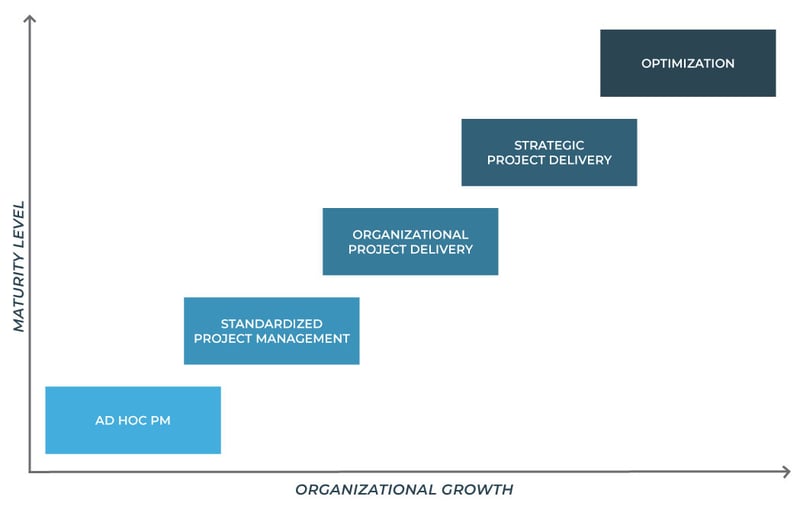“Thank you for making this easy!” This is my favorite thing to hear from a client. After a decade in project management, this type of feedback after a successful launch never gets old. And yet, I also have also been challenged many times with the question: "Do we really need a project manager?"
While I’m certainly biased towards the benefits of project management (PM), there’s a somewhat negative sentiment about the role that I’d like to unpack. The opinion is something similar to the following:
Project management is just a big old cost center and more red tape. It slows our speed to market. We need to ideate, build, and ship. We enjoy our creative juices and want to capitalize on our limberness to meet client needs, without the checks and balances of a project management team.
Do me a favor, and please don’t repeat what I’m about to say to my fellow project managers, but I actually agree that the statement above can sometimes 100% be true! However - and here’s where I redeem myself - this is only the case if and when you haven’t yet “right sized” project management to your organizational maturity and needs. Therefore, instead of asking ourselves if project management is needed, what we really should be wondering is: “What level of project management will bring us the most benefit?”
At Bindable, our project management processes are central to every program we work on, and we believe that’s what drives mutual success for ourselves and, most importantly, for our partners. Knowing that effective PM may remain elusive to some organizations, I wanted to take the opportunity to provide insights into not only how Bindable manages so many partners and projects at the same time, but how every organization, at any stage of growth, can benefit from project management.
The highs and lows of project management
As a leader in project management, I’ll preach the good word sunrise to sunset about the undeniable potential impacts of organized PM. We provide oversight and guidance for deliverables to launch on time, within budget, and at a desired quality. But that’s not to say I’m unrealistic - there are certainly times when project management is too rigid and gets in the way, and other times where we realize we needed more structure from the get-go. But hindsight is always 20/20, right?
Project management is not one size fits all. For instance, say you work at a tech organization of ten people who collaborate on a daily basis. You’re all on the same calls and meetings, you hear all the same decisions, and you all act together in real-time. If you’re changing the company’s logo from baby blue to navy blue, do you really need a lengthy approval process that requires four signatures entered into a project management system to complete this task? Probably not. Sure, the change should be documented and the standard development steps must be followed, but why overcomplicate the approval process if you don’t have to?
On the flip side, say you’re at a global organization of 50,000 people siloed in functional departments across multiple time zones. Does it make sense to give a marketing intern free reign over localizing the dialect on your latest promotional materials? Not to me! Creating new, customer-facing information in multiple languages and for different cultures requires customization and specific attention to protect the company’s brand - this kind of care and sensitivity must come via a more structured project management process.
A maturity scale for project management
In short, project management is a spectrum. Specific processes and needs vary from business to business, from fledgling startups to Fortune 100 brands. The amount of structure you need depends on the maturity of your organization. Project management is not “set it and forget it”; it’s centered around continuous improvement, enhancing processes, and always striving to be better than yesterday.
Take a look at this project management maturity scale - where does your organization fall? (As an aside, look out for a future blog post digging deeper into each level of this scale!)

At the end of the day, project management can help grease the wheels when implemented properly. But if you haven’t matched the right level of project management needs to your organization - whether your current processes are too rigid or, on the flip side, don’t provide enough structure - you may be doing more harm than good.
Project management in many organizations matures organically over time, and it looks different for everyone. Maybe it’s a ‘side of the desk’ task for one person in the beginning, then grows into an actual role, evolves into a small but mighty team of a few project managers, and eventually becomes a whole crew supporting cross-functional departments. What matters most is creating intention about expansion with clearly outlined roles and responsibilities to give project managers room to grow.
Project management in motion
At Bindable, we use project management for implementation and roadmap execution. From project kick-off to launch and beyond, our team is focused on using the best tools, most accurate documentation, and free-flowing communication to move projects along smoothly. We don’t just check off boxes and cross off items on to-do lists to move things forward; we strive to act as trusted advisors for our partners along the way, providing honest, transparent, and real-time feedback that enables them to make the decisions that are best for their organization. For us, project management goes beyond processes and workflows, and lends itself naturally to actively helping our partners along their journey to success.
Next up, stay tuned for a deep dive into the project management maturity scale. Until then, ask yourself: how will you use project management and right size it for your organization?
Curious about working with our team? Contact us today to learn more!
